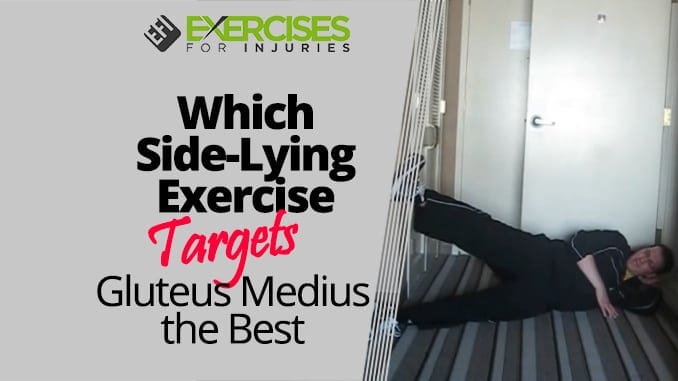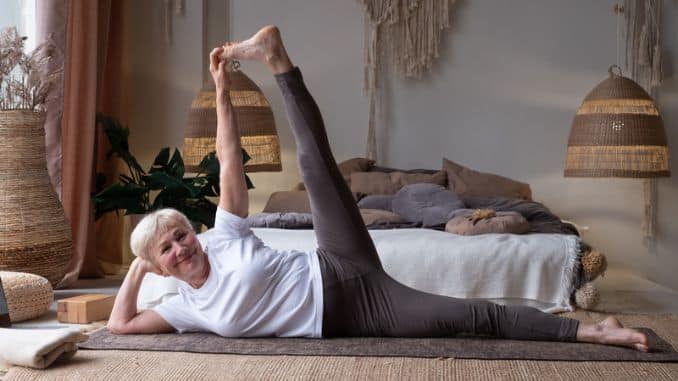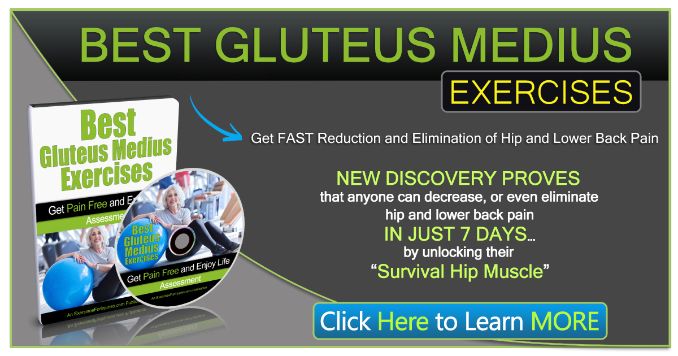
The gluteus medius is one of the most critical muscles for overall strength and mobility. As a bridge-like muscle, it connects the pelvis to the femur (the thigh bone) on either side of your body. The gluteus medius also assists in many basic movements, from walking upstairs to kicking a ball. Weakness in this muscle can lead to an increased risk of injury, especially in sports like basketball, football, and volleyball, that involve side-to-side movement or actions like squatting and lunging. To strengthen the gluteus medius, you need to know which side-lying exercise targets it best. Luckily for you, we’ve got all the details right here!
This weekend, I am teaching Exercise Rehabilitation of the Lower Body courses. This is where I talk about exercises for knee, hip, ankle, and foot injuries.
Before heading to teach, I thought it would be good to see what is new in the research related to the lower body.
Here is a paper that stood out on injuries and exercises:
Hip Muscle Activation in 3 Hip Exercises in Runners
What The Researchers Looked At
It is thought that PFPS and ITBS are caused by weak proximal muscles leading to dynamic valgus of the knee.
Dynamic Valgus is defined as:
“..a malalignment characterized by pelvic drop, which is inferior movement of the contralateral side of the pelvis during single-legged stance; femoral adduction and internal rotation; genu valgum; tibial internal rotation; and hyperpronation, and it occurs when the hip muscles cannot overcome the external torque caused by gravity acting on the body’s center of mass.”
Very cool stuff – try repeating that five times.
The research they did was straightforward. They used 20 distance runners from a local running club. They looked at the EMG (electromyography – electrical recording of muscle activity) of gluteus maximus (GMax), gluteus medius (GMed), tensor fascia late (TFL), and anterior hip flexors (AHF) during these three exercises:
- side-lying hip abduction
- side-lying clam exercises – it is thought that focuses on strengthening the abductors and external rotators of the hip
- Side-lying hip abduction with the leg externally rotated – it is thought this exercise targets GMax better than other exercises.
Cool Stuff in the Introduction
As I have said before, I love reading the introduction to papers. There are always great stats and nuggets of information in there.
- 19% to 79% of runners will sustain a lower extremity injury
- The knee, lower leg, and foot are the most common running injury areas
- The most frequent injuries in runners are patellofemoral pain syndrome (PFPS) and iliotibial band syndrome (ITBS), injuries to the gluteus medius muscle (GMed), and greater trochanteric bursitis.
- TFL and GMed contribute to hip abduction, but TFL also helps with hip flexion.
- VERY IMPORTANT ==> “authors of cadaver-based anatomical studies have demonstrated that beyond 40 degrees of hip flexion, the GMed no longer functions as a primary hip abductor. In more than 40 degrees of hip flexion, the GMEd functions as an internal rotator, and hip abduction is performed by the deep external rotators.”
- VERY IMPORTANT ==> 40% of maximal voluntary isometric contraction (MVIC) is needed to obtain strength gains.
Exercise Set Up
Here are some exercise setup points that stood out:
- Tempo – 60 beats per minute with a metronome with one beat concentric, one moment eccentric, and four seconds rest.
- Hip Abduction – They limited people to 35 degrees of hip abduction.
- Pelvis Neutral – They prevented pelvis movement using a blood pressure device in the lower back area.
- Resistance – 5% of body weight.
- Clam Exercises – It was done with 45 degrees of hip flexion and 90 degrees of knee flexion. The top leg was lifted to 25 degrees to the horizontal.
The Results from the Research
- Side-lying Hip Abduction – GMed (79.1% MVIC) was more active than TFL (54% MVIC), AHF, and GMax.
- Side-lying Clam Exercises – AHF (54.2% MVIC) was more active than GMed (32.6% MVIC), TFL, and GMax.
- Side-lying Hip Abduction with the Leg Externally Rotated – TFL (70.9% MVIC) was more active than GMax (31.7% MVIC), GMed, and AHF.
Rick’s Comment on Things
Also, remember that there is a difference between body weight and resistance exercises. This research showed that with resisted side-lying hip abduction, GMed had a 79.1% MVIC, while other studies showed when it was just bodyweight, it had 46.06% MVIC.
The point about 40% MVIC to see strength gains is crucial as side-lying clam exercises and side-lying hip abduction with the leg external rotate did not meet these requirements when targeting GMed or Max.
Where Should You Put the Tubing Around Your Knees to Target Gluteus Medius the Best?
What The Researchers Looked At
The researchers wanted to look at designing a progressive rehabilitation program based on muscle activation.
They looked at the “Monster Walks” and “Sumo Walk.” During each workout, the researchers examined the tubing’s location at the feet, ankles, and knees.
They looked at nine healthy male subjects and their muscle activation in the hip and torso.
The Results from the Research
- Tensor fascia latae (TFL) demonstrated increased activation when you moved the band from the knees to the feet, but there was no difference between the ankle and the foot.
- Gluteus medius – demonstrated an increase in activation as you move from the knees to the toes.
- The Gluteus maximus – only wrapped the tubing around the feet when it was active.
- External Rotation of the Hip – when the tubing was wrapped around the ankles or feet, this led to more significant external rotation of the hip, leading to greater gluteus medius and Maximus activation.
Rick’s Comment on Things
I discussed this last weekend during the Exercise Rehabilitation of the Lower Body courses. I am glad I dug this up and finally read this.
This info will help Bootcamp instructors, personal trainers, senior fitness leaders, and rehabilitation professionals.
Darn, I love to research.
That is it, have a great day.
Rick Kaselj, MS
If you enjoyed the above article, here are some of my other research reviews:
- Tennis Elbow Exercise Mistakes
- Core Stability and Injuries Plus a Tennis Elbow Exercise
- Scapular Stabilization Exercises, Jumper’s Knee, and Osteoarthritis
Here is a resource for gluteus medius exercises. It is the video presentation that I did on Gluteus Medius Exercises:


